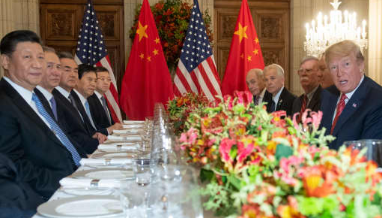Major TV Brands to Increase Panel Purchases by up to 15% QoQ in 3Q18, Says TrendForce
The stock up for the World Cup has come to an end in 1Q18, earlier than expected. The market grows weak in 2Q18 with no particular demand for TV panels. WitsView, a division of TrendForce, estimates that the major branded TV makers will reduce their panel purchases by 4% quarterly in 2Q18.
“The TV industry will enter the traditional peak season in the third quarter, so TV makers will be more active in panel purchase in order to achieve the annual shipment goals”, says Jeff Yang, the assistant research manager of WitsView. Therefore, WitsView estimates that the major TV brands’ panel purchases will increase by 10~15% quarter-on-quarter.
Gap between demand and supply continues to expand in 2Q18
TV brands have already prepared for demand brought by the World Cup in advance. Considering the time for preparing raw materials, shipping and distribution, the brands have stocked up panels before 1Q18. However, the panel purchases decrease by 4% QoQ in 2Q18, with the World Cup coming to an end and lower-than-expected sales of TVs during Chinese New Year and May 1st holiday. In addition, the uncertainties about U.S.’s tariffs on Chinese products also influenced the brands’ purchase plans.
Moreover, Chinese panel makers, including Gen 10.5 of BOE and Gen 8.6 of CEC-CHOT, have begun to ship panels to the market, making the supply and demand situation even more imbalanced. As the panel prices continue to drop, TV brands may adopt more conservative purchase strategies in 2Q18. Through the conservative purchase plans, TV makers would not only avoid stock depreciation, but also be more prepared for the peak season in the second half.
Branded TV makers will be more aggressive in sales with higher panel purchase plan in 3Q18
Looking forward to the peak season in 3Q18, TV brands will be more aggressive in sales in order to achieve their annual shipment goals, says WitsView. According to the recently proposed tariffs on Chinese products exported to the U.S., TV sets are not in the tariff list. Therefore, for the short term, TV brands are faced with lower risks for stock up, they can also further plan for the promotion in Europe and the U.S.
Particularly, WitsView notices that the prices of large-size 4K TVs have been decreased in the 618 mid-season sales of China. In the promotion, there were limited offers of 55-inch and 65-inch TVs at the price of RMB 1,999 and RMB 2,999 respectively. This trend shows that TV brands aim to boost the demand for large-size TVs with the help of lower panel prices.
As for the supply, TV panel prices have been decreasing for over a year due to the oversupply in market, even approaching the cash costs of panel makers. For the short term, there has been no sign that panel makers would cut the production, but they have been optimizing the production mixes to reduce the share of 32-inch or smaller panels and increase the share of 43-inch or larger ones. This strategy will help panel makers stay in line with the TV set makers’ product plans, and consume more capacity at the same time.
Looking forward, WitsView stays optimistic about the 3Q18 TV market, since the U.S.-China trade war will not impact the TV set market for the short term. Together with the lower and lower prices of large-size TVs, WitsView estimates that the major TV brands’ panel purchases will increase by 10~15% quarterly.
在线留言询价

China's Xi is about to deliver a speech that could have major consequences for the trade war

US will hold off on raising China tariffs to 25% as Trump and Xi agree to a 90-day trade truce

Expect a photo op and a 'mock deal' at the Trump-Xi meeting — not a long-term truce, says economist
- 一周热料
- 紧缺物料秒杀
| 型号 | 品牌 | 询价 |
|---|---|---|
| RB751G-40T2R | ROHM Semiconductor | |
| CDZVT2R20B | ROHM Semiconductor | |
| BD71847AMWV-E2 | ROHM Semiconductor | |
| MC33074DR2G | onsemi | |
| TL431ACLPR | Texas Instruments |
| 型号 | 品牌 | 抢购 |
|---|---|---|
| IPZ40N04S5L4R8ATMA1 | Infineon Technologies | |
| BU33JA2MNVX-CTL | ROHM Semiconductor | |
| STM32F429IGT6 | STMicroelectronics | |
| TPS63050YFFR | Texas Instruments | |
| BP3621 | ROHM Semiconductor | |
| ESR03EZPJ151 | ROHM Semiconductor |
- 周排行榜
- 月排行榜
AMEYA360公众号二维码
识别二维码,即可关注


请输入下方图片中的验证码:






















